Contemporary Bamboo
Bamboo (take or dake in Japanese), the fastest-growing woody plant on Earth, has been a cultural underpinning in Japan since forever. It has been used there to make everything from cups and tea whisks, to timbers for the roofs of houses. Bamboo sprouts (dakenoko) have also been used in cooking.
It is variously a symbol of strength, because of its sturdiness, and also purity and innocence, because it is simple and unadorned. There were a lot more master bamboo artists in the past, but plastic has overtaken bamboo in the department of utilitarian arts. Nonetheless, there are estimated to be about 100 master bamboo artists, and we were lucky enough to get some of their gorgeous works for our digital image collection from the Philadelphia Museum of Art. These works are proof that the art form is definitely alive and well! In the past, some bamboo master artists have been named National Treasures in Japan.
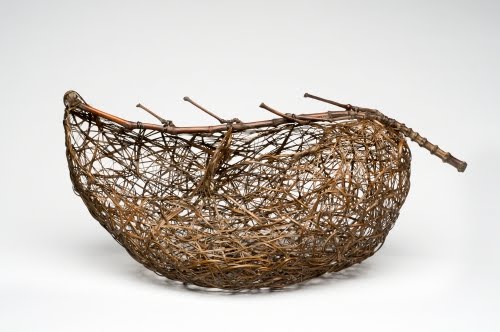 |
| Nagakura Kenichi (born 1952), Curve, 2001. Bamboo (madake), 10" x 10" x 9" (25.4 x 25.4 x 22.9 cm). Philadelphia Museum of Art. © 2016 Nagakura Kenichi. (PMA-6743) |
Bamboo grows all over Japan because of the humid, warm climate. There are roughly 1000 recorded species of the plant. Some bamboo species are amazingly fast growing, some as fast as 47 5/8" (121 cm) a day! That seems amazing, but it must account for the fact why bamboo is so relied upon in Japan as a lumber stock.
Bamboo is often included in arrangements with pine boughs at New Year because of its auspicious nature. Pine stands for longevity and endurance, while bamboo is strength and flexibility. Along with plum branches (representing a young spirit), they symbolize the cardinal qualities of long life, hardiness and vitality.
The artists represented here have created objects, both utilitarian and sculpture, of amazing grace and complexity, showing the versatility of bamboo. As is evident with these artworks, the most common way to use bamboo in Japan is to split it into strips to use in basket arts. It is quite literally a “green” art form, because bamboo is a sustainable crop. How wonderful that such a venerable, ancient art form can come into the 21stcentury in exciting new forms.
Some of the bamboos seen here are:
- Madake, timber bamboo—the most common type
- Nemagari, a short, mounting form common in Nagano Prefecture (sasa senanensis)
- Menyadake, a form in which three branches grow out of each node on the main stalk
- Susudake, the most prized, smoked bamboo 100 years or older taken from old roof timbers, usually from the late Edo Period (1615–1868)
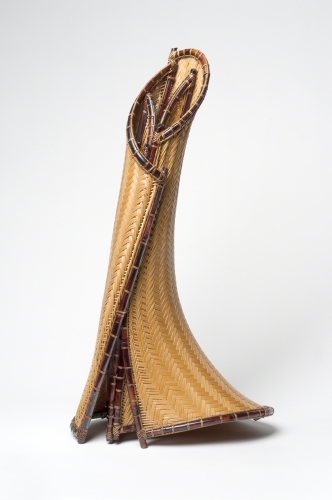 |
| Honma Hideaki (born 1959), Graceful Figure, 1997. Bamboo (menyadake and nemagaridake), 30" x 15" x 10" (76.2 × 38.1 × 25.4 cm). Philadelphia Museum of Art. © 2016 Honma Hideaki. (PMA-6727) |
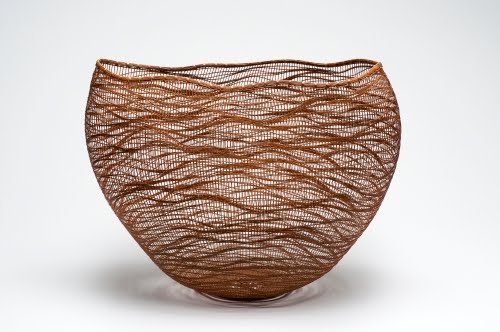 |
| Morigami Jin (born 1955), Untitled, 2001. Bamboo (madake) and rattan, 18" x 10 1/2" x 14" (45.7 x 26.7 x 35.6 cm). Philadelphia Museum of Art. © 2016 Morigami Jin. (PMA-6740) |
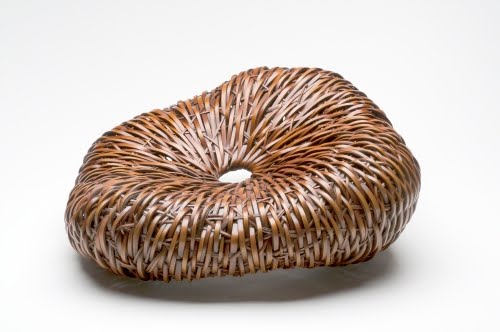 |
| Mimura Chikuho (born 1973), Cloud on the Peak, 2005. Bamboo (madake), 7 1/2" x 17" (19.1 x 43.2 cm). Philadelphia Museum of Art. © 2016 Mimura Chikuho. (PMA-6738) |
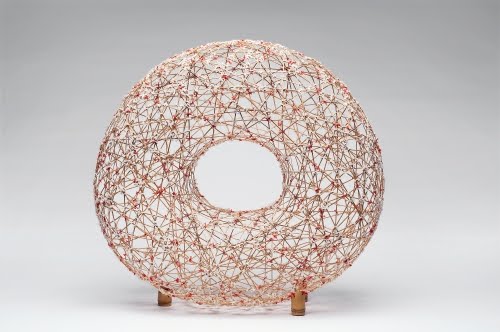 |
| Kawashima Shigeo (born 1958), Cosmic Ring II, 2002. Bamboo (madake) and cotton thread, 16" x 16 1/2" x 7 1/2" (40.6 × 41.9 × 19.1 cm). Philadelphia Museum of Art. © 2016 Kawashima Shigeo. (PMA-6732) |
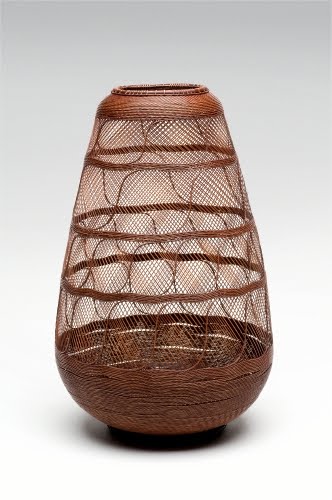 |
| Nakatomi Hajime (born 1974), Fragrant Wind II, 2003. Bamboo (madake) and rattan, 14" x 8 1/2" (35.6 x 21.6 cm). Philadelphia Museum of Art. © 2016 Nakatomi Hajime. (PMA-6745) |
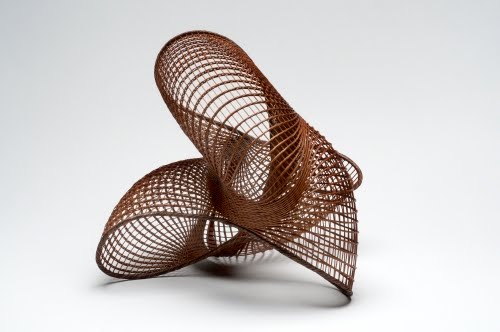 |
| Honda Syōryū (born 1951), Dance, 2001. Bamboo (madake) and rattan, 11 3/4" x 14" x 11 1/2" (29.8 x 35.6 x 29.2 cm). Philadelphia Museum of Art. © 2016 Honda Syōryū. (PMA-6725) |
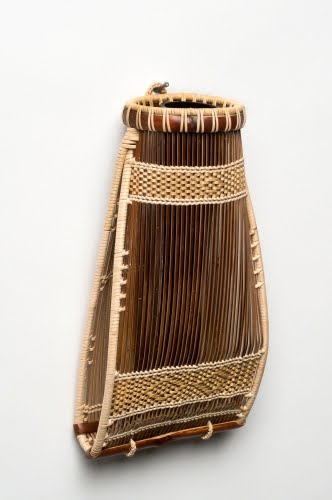 |
| Kosuge Hōunsai Kōgetsu (born 1932), Hanging flower basket with comb pattern (kushime), 2005. Bamboo (Susudake, sadodake and nemagaridake) and rattan, 9 1/2" x 5" x 3 1/2" (24.1 x 12.7 x 8.9 cm). Philadelphia Museum of Art. © 2016 Kosuge Hōunsai Kōgetsu. (PMA-6736) |
Correlations to Davis Programs: Explorations in Art Grade 4: 6.35; Explorations in Art Grade 6: 4.studio23-24, 5.25; A Personal Journey: 3.1, 3.4, 3.5; A Community Connection: 3.2, 5.2; A Global Pursuit: 7.5; Beginning Sculpture: 6; Exploring Visual Design: 6, 11; The Visual Experience: 7.2, 10.2, 12.4, 13.5, 16.8; Discovering Art History: 2.2, 4.4


Comments